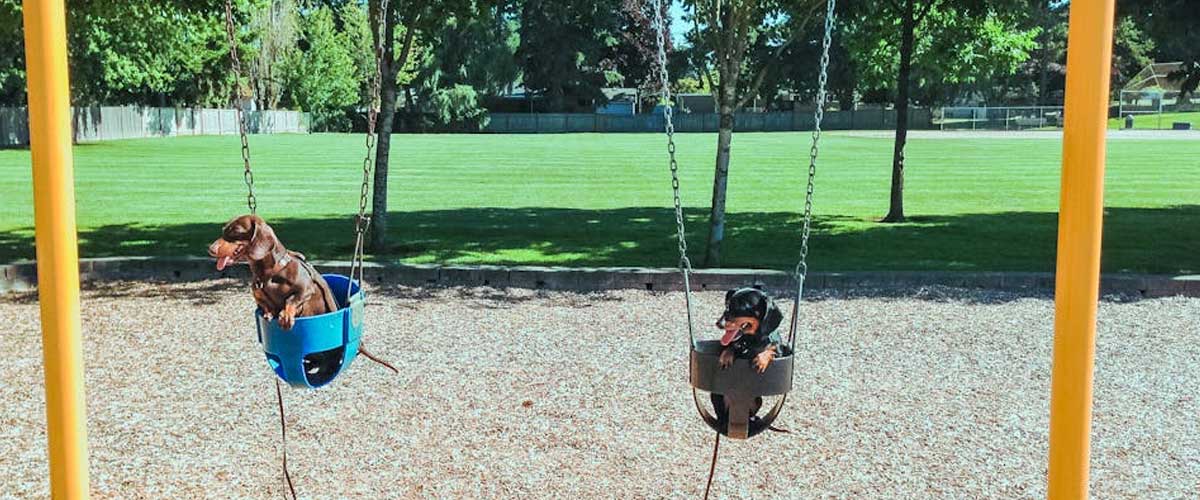Hip dysplasia is a common orthopedic disorder affecting many dog breeds, particularly larger ones.
This condition occurs when the hip joint does not fit properly into the hip socket, leading to instability and potential degeneration of the joint.
As this is a hereditary condition, it’s more prevalent in certain breeds, making awareness and early intervention essential for pet owners.
Affected Breeds
While hip dysplasia can occur in any dog, it is most commonly seen in larger breeds such as:
German Shepherds:
Known for their intelligence and versatility, German Shepherds are particularly prone to hip dysplasia.
Their strong and agile nature can sometimes mask early symptoms, making monitoring crucial.
Labrador Retrievers:
As one of the most popular dog breeds, Labs are also at higher risk.
Their playful demeanor and love for activity can strain the joints, exacerbating any underlying issues.
Golden Retrievers:
Similar to Labs, Golden Retrievers are susceptible to hip dysplasia, often as a result of their breeding.
Regular check-ups and awareness of their activity levels are essential.
Rottweilers:
These strong and powerful dogs can develop hip dysplasia, which can greatly impact their quality of life if not addressed.
Bulldogs and Pugs:
Smaller breeds like Bulldogs and Pugs can also experience hip dysplasia, although it’s less common.
Their unique body structures can contribute to joint problems.
Signs and Symptoms
Pet owners should be vigilant for signs of hip dysplasia, which may include:
Limping or Lameness:
This is often most noticeable after exercise or during playtime.
Difficulty Rising:
Dogs affected by hip dysplasia may struggle to get up or show reluctance to move.
Reduced Activity Levels:
A decrease in playfulness or reluctance to engage in physical activities can be a significant indicator.
Abnormal Gait:
A dog with hip dysplasia may display a waddling gait or have difficulty jumping or climbing stairs.
Diagnosis
If you suspect your dog may have hip dysplasia, it’s important to consult a veterinarian.
Diagnosis typically involves a physical examination and imaging tests such as X-rays.
These tests can reveal the extent of joint malformation and help devise a management plan.
Treatment Options
There are several avenues for managing hip dysplasia:
1. Weight Management:
Keeping your dog at a healthy weight reduces stress on the joints, minimizing discomfort and slow disease progression.
2. Exercise Modifications:
Low-impact, controlled activities (like swimming or leash walks) can maintain muscle tone without putting undue strain on the hips.
3. Medications and Supplements:
Nonsteroidal anti-inflammatory drugs (NSAIDs), pain relief medications, and joint supplements like glucosamine and chondroitin can help manage pain and inflammation.
4. Physical Therapy:
Veterinary-guided rehabilitation can improve joint function and mobility, offering significant relief for affected dogs.
5. Surgery:
In severe cases, surgical options such as hip replacement or corrective osteotomy may be necessary to provide long-term relief and restore function.
Prevention
While hip dysplasia is hereditary, certain practices can mitigate risks.
Responsible breeding programs focus on genetic screening, ensuring both parents are free from hip dysplasia before reproducing.
Regular veterinary check-ups can help catch problems early, providing an opportunity for proactive management.
Conclusion
Understanding hip dysplasia is crucial for pet owners, especially those with dog breeds predisposed to this condition.
Early detection, a healthy lifestyle, and appropriate treatment can improve the quality of life for dogs with hip dysplasia, enabling them to lead happy and active lives.
Always consult with a veterinarian to assess any concerns regarding hip dysplasia and to create a tailored care plan for your furry friend.









